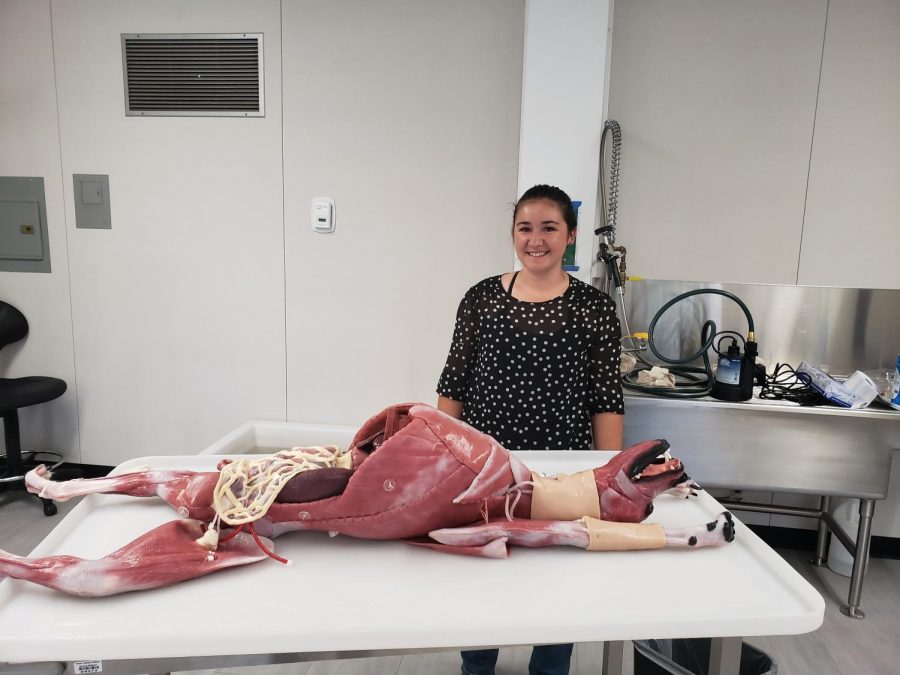New Cadaver Dogs Allow Students To Make Major Educational Advancements
Ms. Berry stands near the Cadaver dog. Its realistic body allows students to be able to practice and be as accurate as possible. Photo Creds: Anthony Winslow
October 22, 2018
In early October, Don Lugo became the first high school in the world to make use of cadaver dogs. The synthetic labradors are designed to be as realistic as possible, and will be used for several veterinary science lessons, mostly interactive anatomy lessons. The canines are manufactured by SynDaver Labs, and they come with several benefits over using dead bodies for educational processes.
For example, the use of synthetic cadavers eliminates the need to euthanize animals for research. Also, the model has been made to recreate live tissue and body processes, meaning the animal bleeds, follows a pulse, breathes, and even wakes up from anesthesia! Finally, the animal is designed for continued usage, meaning they can be serviced and reused in later lessons, even after a major surgery.
We can still get the hands on experience without hurting anything
— Ms. Berry
However, there is one problem: the dogs are expensive. One dog costs $40,000, and replacement parts typically cost $3,500. Luckily, Don Lugo was able to purchase the dogs through leftover funds received from a medical grant, which also allowed the Veterinary Science buildings to be completely refurbished.
It is also possible that in the long run, these dogs are a cheaper purchase than real cadavers, but it should be noted that Don Lugo does not make use of real cadavers. If traveling the Veterinary Science field appeals to students, they should look into the Agricultural Medicine program, where they can now learn anatomy hands-on, in addition to much more.












Karly Ortiz • Nov 9, 2018 at 12:47 PM
Well written! I’m especially impressed that you’ve managed to keep such an interesting story short and sweet. Keep it up.